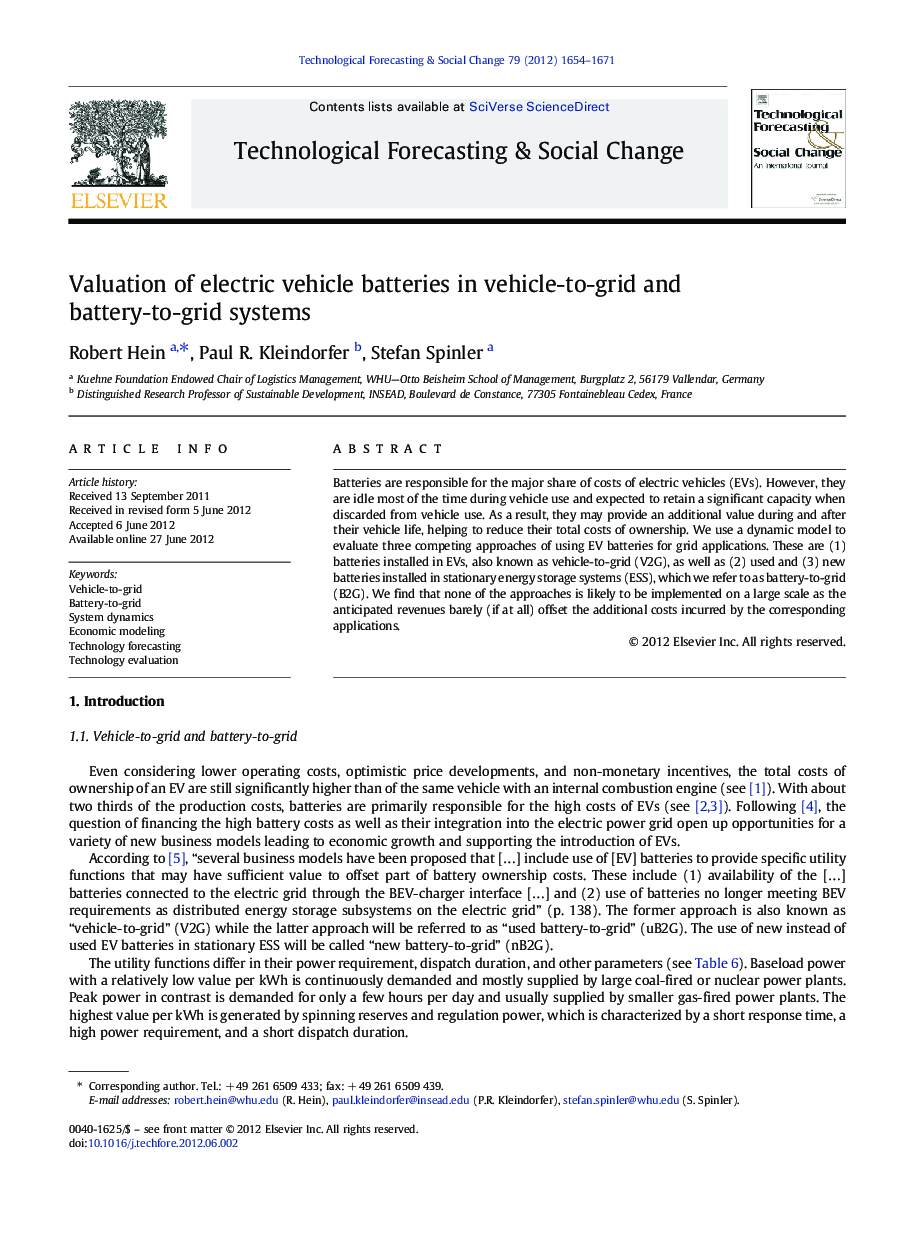| Article ID | Journal | Published Year | Pages | File Type |
|---|---|---|---|---|
| 896655 | Technological Forecasting and Social Change | 2012 | 18 Pages |
Batteries are responsible for the major share of costs of electric vehicles (EVs). However, they are idle most of the time during vehicle use and expected to retain a significant capacity when discarded from vehicle use. As a result, they may provide an additional value during and after their vehicle life, helping to reduce their total costs of ownership. We use a dynamic model to evaluate three competing approaches of using EV batteries for grid applications. These are (1) batteries installed in EVs, also known as vehicle-to-grid (V2G), as well as (2) used and (3) new batteries installed in stationary energy storage systems (ESS), which we refer to as battery-to-grid (B2G). We find that none of the approaches is likely to be implemented on a large scale as the anticipated revenues barely (if at all) offset the additional costs incurred by the corresponding applications.
►We model three competing approaches of using electric vehicle batteries for grid applications. ►We assess the residual value of used electric vehicle batteries from a value-generating perspective. ►We find that none of the three approaches considered is likely to be implemented on a large scale. ►We find that the residual value of used electric vehicle batteries is negligible. ►We identify key drivers and conditions determining the success of a given approach.
